Film Independent Presents… Nine(ish) Movies About Weird Dreams and Sleepless Nights
Along with our new virtual screening room, Film Independent Presents continues to recommend great stuff to watch, with weekly streaming video playlists curated by Film Independent Senior Programmer Jenn Wilson.
***
The subject of this week’s Film Independent Presents playlist is “dreams and insomnia.” And we have a guest co-blogger to help: writer, filmmaker and former Executive Director of the Northwest Film Forum, Courtney Sheehan. In fact, Sheehan’s current project, Anybody’s Dream—a new series on dream technology—inspired this week’s theme. Sheehan has written the section on “Dreams,” while I wrote about “Insomnia.” So pour another cup of coffee and enjoy!
DREAMS
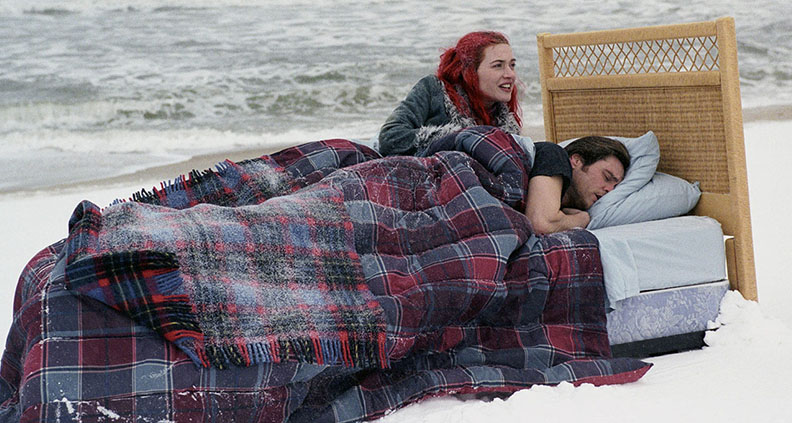
Remember any dreams lately? These days, you’re probably remembering more dreams than you usually do. And chances are those dreams are even more unusual than… well, usual. You’re not alone. Over the course of just a week, the Google query, “why have my dreams been so weird lately” quadrupled in the U.S. The culprit? COVID-19. The coronavirus has forced us inside in more ways than one, as we spend less time out in the world with each other, and more time inside our minds.
Over the last several weeks, tons of articles have detailed the pandemic’s nocturnal impacts: disrupted sleep cycles, prolonged dream-saturated REM states, and dream content riddled with the hyper-specific anxieties of our times. COVID-19 dream collection projects abound, amassing dream reports for historical documentation of the collective unconscious. Even the literal fever dream of coronavirus-infected Chris Cuomo made headline news during his brother’s press conference.
Here, Cuomo marvels at how his dreams feel “straight out of a movie.” We often compare the vivid stories, emotions and visuals of dreams to cinema. When, in fact, movies are straight out of dreams. The dreaming mind is the original source of jump cuts and match dissolves. To illustrate, here’s a selection of films that fully embrace the blurry line between wake and sleep, dream and cinema:
IVAN’S CHILDHOOD (1962)
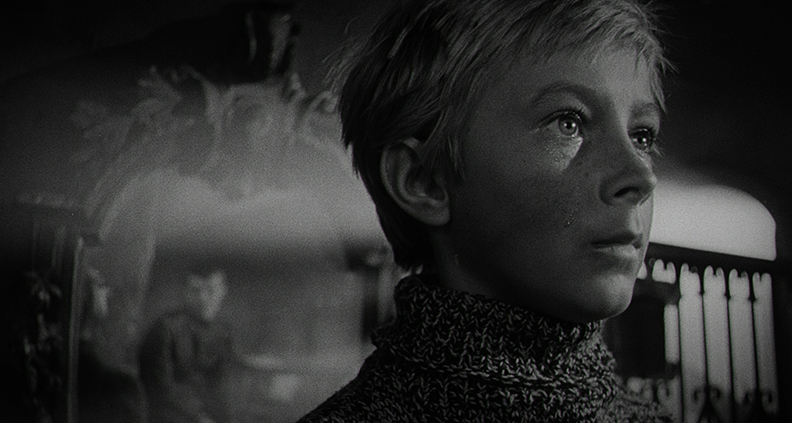
The very first scene of titan auteur Andrei Tarkovsky’s debut feature is a sublime dream scene that sets up the film’s entire structure, each act unfolding around a dream of the titular young protagonist. It’s no small feat to cinematically render the physics-defying, constantly fluctuating movement of characters, objects and locations as we experience them in dreams. Tarkovsky does so masterfully here. In one dream scene early in the film, Ivan falls asleep on a cot in the army barracks, which then seamlessly transforms into the bottom of a well—an evocative symbol of the unconscious.
“It’s deep,” the boy remarks as he drops feather down the deep well. “Of course it is,” his mother replies. Ivan reaches over the well to grasp at starlight he sees in the water, and in the next shot he’s down in the bottom of the well, capturing that phenomenon in dreams where the setting can change from one second to the next.
The final flashback ties all the dream symbols together, reflecting the way in which the dreaming mind recomposites fragments of memories from across our lifetime into novel convalescences. The documentary Directed by Andrei Tarkovsky (available on Kanopy) includes a fascinating section on Tarkovsky’s relationship to his dream life, with diary entries read aloud by his late wife.
WAKING LIFE (2001)
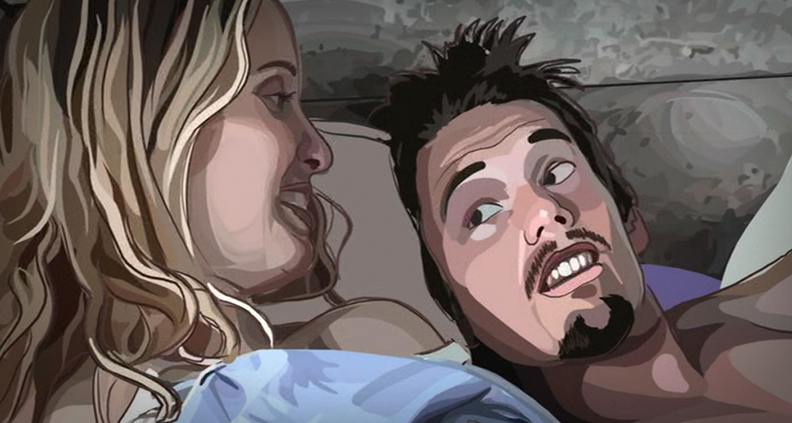
If you’re itching to transcend the confines of our current moment with a big picture zoom-out on the meaning of life and the nature of reality, now is a great time to revisit Richard Linklater’s loquacious rotoscoped amble through a series of increasingly intense lucid dreams (dreams in which you know you are dreaming.) It’s been almost 20 years since this technically innovative and unapologetically intellectual “experimental philosophical adult animated docufiction” premiered at Sundance in 2001. Though it skews too heavily toward white male pontification, there are many flavors of insight on offer here—and some of the most iconic cinematic representations of lucid dreaming.
UNTIL THE END OF THE WORLD (1992)
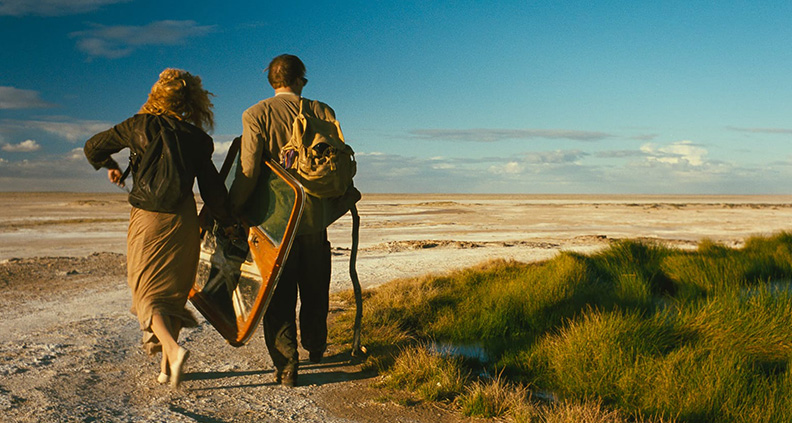
WIRED just revisited Wim Wenders’ sprawling 1992 film, set in the near-future of 1999 when a nuclear satellite gone haywire leads to a global unraveling nearly as epic as the directors cut’s five-hour runtime. The article draws parallels to the current pandemic and life under quarantine, noting how “the film mutates from spirited intercontinental caper to one that mulls the impact of isolation, fear and uncertainty in the face of a spreading, unseen menace.” The future imagined by the film accurately anticipated many technological developments, including videophones, talking GPS systems and—most provocative of all—a dream-recording device.
Even this idea isn’t so far-fetched: Japanese researchers established the basic proof of concept for dream decoding using neuroimaging back in 2013. Before you lose (more) sleep over the idea of someone watching your dreams, rest assured. We’re a long way off from a fully capable dream recorder. But other examples of dream tech are emerging, from EEG wearables that claim to induce lucid dreams to an MIT prototype that allows you to program what you want to think about in hypnagogia, the liminal state when you’re falling asleep (just Google “MIT Dormio” for a mind-bending rabbit hole.)
ON BODY AND SOUL (2017)
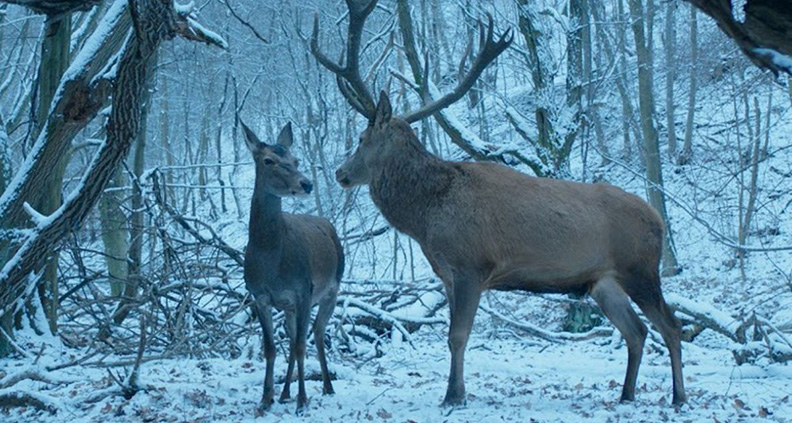
If the idea of shared dreaming intrigues you, this is a must watch. Hungarian director Ildikó Enyedi won the Golden Bear at Berlinale—and an Oscar nomination for Best Foreign Language Film, in 2017—for her film On Body and Soul. In the film, an unlikely romance unfolds at a cattle slaughterhouse between the CFO and a quality inspector after the pair discovers a bizarre link: they are having the same shared dream each night. With dark mood and dark humor in equally effective measure, On Body and Soul renders the intertwining of two peoples’ psychological interiors in a distinctly memorable way, thanks to a clever visual device.
RANDOM ACTS OF FLYNESS EPISODES 5 & 6 (2018)
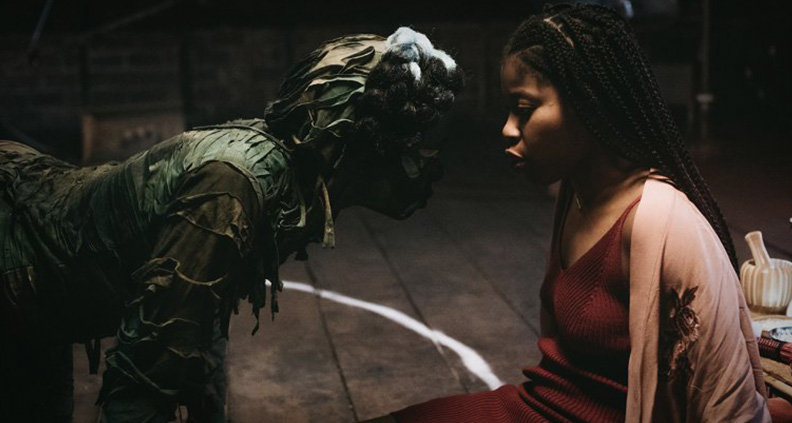
Pardon a detour into television—but ever so slight, really, because Terence Nance’s Random Acts of Flyness is a show unlike any other. The final two episodes of the first season take on sleep and dreams in a profoundly unique way. Episode 5, “I Tried to Tell My Therapist About My Dreams/MARTIN HAD A DREEEEAAAAM” offers a speculative telling of what Martin Luther King, Jr. quite literally dreamed—as well as what happened after he woke up.
In the next episode, the season finale, “A Woman Stays Woke Too Long,” ask the question: at what point is peaceful sleep a privilege, a luxury? Who gets to rest easy, and who has to always be on their guard? In the central story, a woman deliberates whether to use a service that uploads your consciousness to the cloud, a process that pulls the user into a kind of catatonic sleep state. Such ethically fraught neurotechnology feels just near future enough to be frighteningly believable—especially as the demand for touchless tech and virtual interactions only continue to grow in the wake of the coronavirus pandemic.
More excellent dream-invocations in cinema: Paprika, Kurosawa’s Dreams, The Cell, Eternal Sunshine of the Spotless Mind, Cemetery of Splendour, Portrait of a Lady, I’ve Heard the Mermaids Singing, Movern Callar.
INSOMNIA (1997)
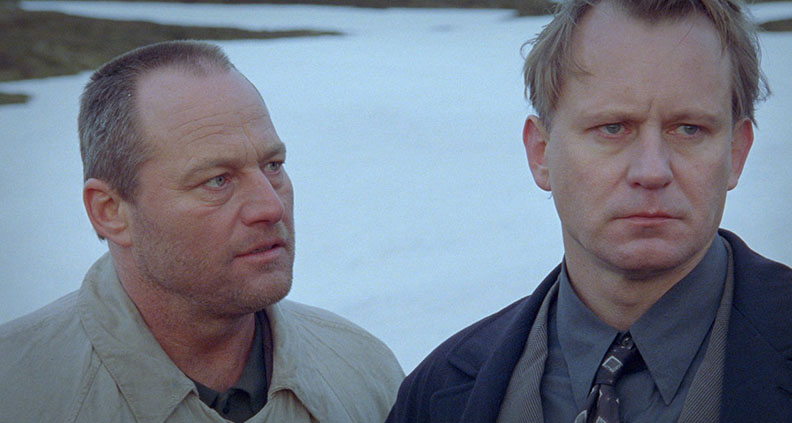
In times of uncertainty, people deal with their stress in different ways. Some, like me, sleep for long stretches and squeeze in as many catnaps as my schedule will allow. But others find sleep completely elusive. Sleeplessness can cause us to lose our grip on reality, and the four films I’ve chosen here demonstrate what life is like when humans can’t sleep and life becomes a waking dream/nightmare, starting with, you guessed it…
The original Norwegian Insomnia, from 1997. The film features a stellar performance by Stellan Skarsgård as a cocky Swedish police detective working a murder case in Norway. When a shootout results in the accidental death of his cop partner, the combination of guilt/grief—coupled with the six months of daylight of Norway’s midnight sun—results in a bout of sleeplessness that has Skarsgård imagining that he’s speaking to his dead partner every night while struggling to sleep. Skarsgård’s detective is an unabashedly corrupt coward who isn’t going to face any consequences for anything he does in the end, but dealing with his own psyche looks like it might be punishment enough for him.
THE MACHINIST (2004)
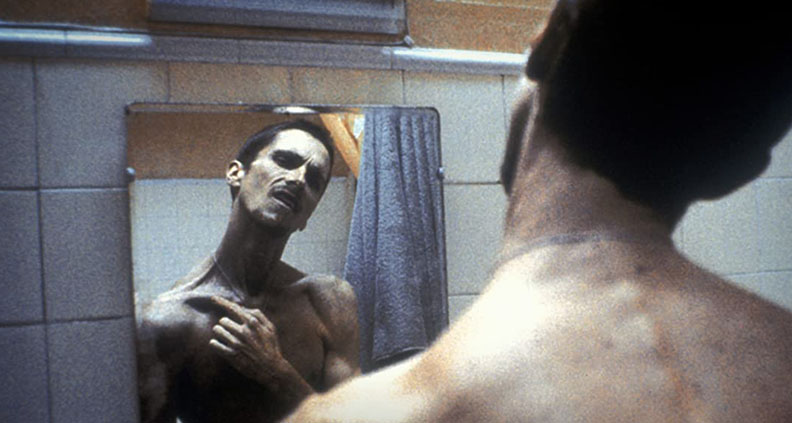
In what may be one of the most shocking physical transformations undertaken by an actor for a role, Christian Bale lost 70 pounds to play the lead character, Trevor Reznik, in The Machinist. I hadn’t seen this film since it came out in 2004, and it’s still a completely mesmerizing and wonderfully bizarre noir tale. Trevor hasn’t been able to sleep for an entire year and is literally wasting away before our eyes. Suddenly, strange things start happening to him. But are they happening for real, or is he hallucinating because of sleep deprivation? I won’t reveal the answers here in case people haven’t yet seen the film, but suffice it to say the mind is a strange and powerful thing, especially when it hides our secrets from everybody—including ourselves.
TAXI DRIVER (1976), FIGHT CLUB (1999)
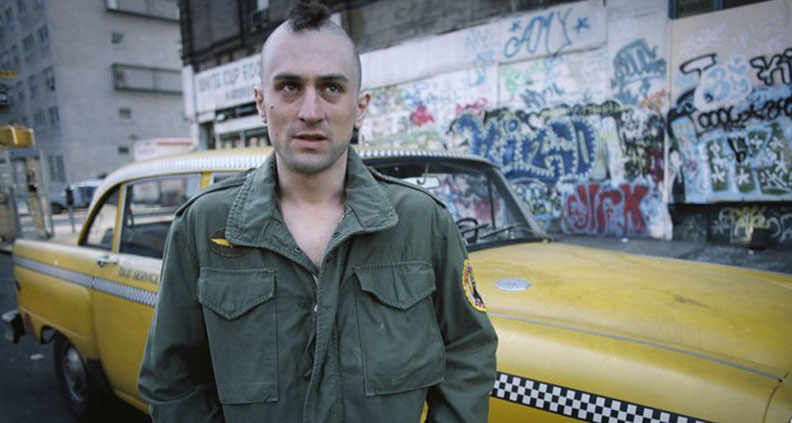
The ultimate pillars of toxic masculinity, Taxi Driver and Fight Club, remain completely fascinating chilling examples of what happens when writers genuinely grapple with their own psyches in a dark night of the soul. Sometimes it’s literally as if both Paul Schrader and Chuck Palahniuk asked themselves the same question, “just what is wrong with white American males?” and what popped out was these two films. Both films are about middle-class White American male insomniacs casting about for some meaning in life.
But as it turns out, both films’ characters end up being particularly dangerous. When they don’t get what they want from the women in their lives, they each form insane ideologies that end in real violence. To add insult to injury, both get away with it, proving that in the end that they always possessed what so many in society don’t have: the benefit of the doubt and plausible deniability.
Here’s where to find this week’s featured titles:
Ivan’s Childhood (1962) – Andrei Tarkovski – The Criterion Channel, Kanopy
Waking Life (2001) – Richard Linklater – Available to rent or buy online
Until the End of the World (1991) – Wim Wenders – The Criterion Channel
On Body and Soul (2017) – Ildiko Enyedi – Netflix
Random Acts of Flyness (2018) – Terence Nance – HBO NOW/GO
Insomnia (1997) – Erik Skjoldbjærg – The Criterion Channel, Kanopy
The Machinist (2004) – Brad Anderson – Amazon Prime
Fight Club (1999) – David Fincher – HBO NOW/GO, Cinemax
Taxi Driver (1976) – Martin Scorsese – Netflix, Showtime
Film Independent Artist Development promotes unique independent voices by helping filmmakers create and advance new work. More Film Independent Presents here.
To learn how to become a Member of Film Independent, just click here. New Members who join this week will receive an additional two months—14 months total. To support Film Independent with a donation, click here.
More Film Independent…
(Header: Waking Life)

